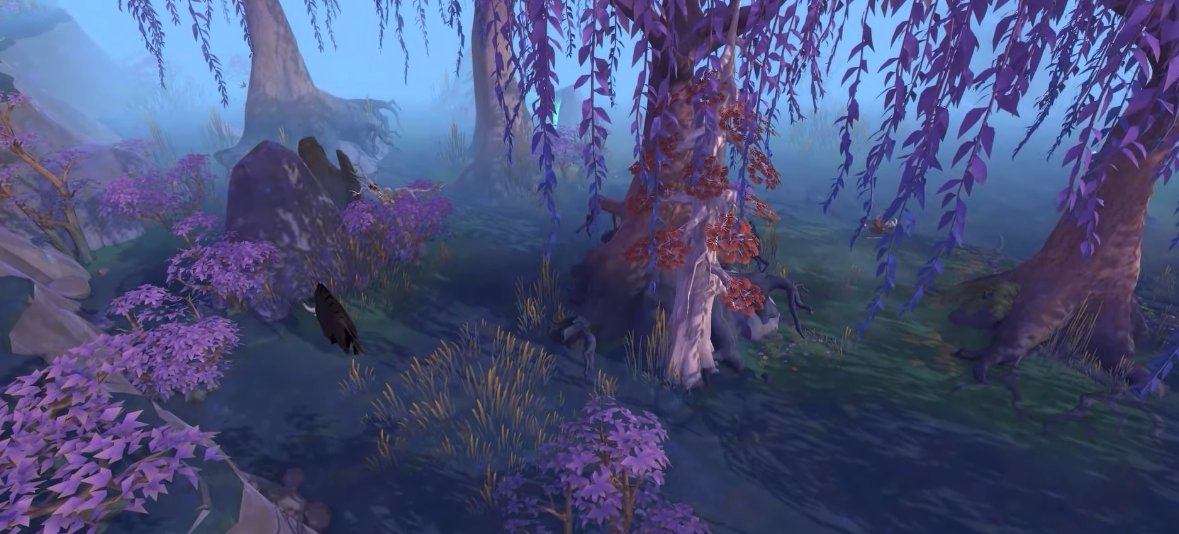Today I’m going to be teaching you about biomes in Albion Online. Everything from what a biome is to what resources each biome has. Let’s get started!
Table of Contents
Other Albion Online Guides
What are biomes Albion Online
Biomes, in general, are regions of the world with similar climate (weather, temperature) animals, and plants In Albion Online, biomes are very much the same with resources being split between each biome.
Here is the list of all five biomes:
- Forest
- Highlands
- Mountain
- Swamp
- Steppe
There are a few things that separate each biome in Albion Online. First and most notably, similar biomes have a certain aesthetic to them, this also goes for their layouts. Secondly, and most importantly, each biome has a specific set of resources in them. These are called primary, secondary, and tertiary resources.
When first starting out in Albion, choosing which biome to be in is fairly important. If you don’t select the right one gear could end up being far more expensive and you might find it hard to get your choice of resource as well.
Now, let me explain resource distribution.
Primary, Secondary, And Tertiary Resources Albion Online
For each biome, there are three resources that reside in their zones. No more, no less. For each of these three resources, there are also three tiers. For example, yellow zones are 3-5.
Therefore, you have to realize that each of the three resources is distributed differently in each biome. In brief, the distribution of each resource from highest to lowest is, primary, secondary, and tertiary. Primary resources make up 1/2 of the total resources in the area, secondary make up 1/3 of the total resources, and tertiary makes up 1/6 of the total resources.
Also, you need to remember the tiers. So a primary resource would have 600 total resources or 200 for each tier of that resource. Secondary 133 and so on.
The totals are as follows:
- Primary: 200 of each
- Secondary: 133 of each
- Tertiary: 66 of each
Those numbers are only for the royal continent, however. Black zones are different, as they have much rarer resources available.
As you can see the tier seven zone has this many primary resources:
- Tier 6: 450
- Tier 7: 105
- Tier 8: 23
- Total: 578
While the tertiary resource only has:
- Tier 6: 185
- Tier 7: 35
- TIer 8: 7
- Total: 227
So this leads me to the final point of this section. If you plan to gather in the royal cities, it is sometimes better to go to biomes where your resource is secondary, leading to less competition. However, when going into black zones that are far less efficient a strategy as there are far fewer resources to be had.
Next up are Guardians and Aspects that reside in the biomes.
Guardians and Biomes

Biomes can also be home to powerful resource mobs known as Guardians or Aspects. Of course, they also have to be in red/black zones to show up.
Additionally, for a Guardian or Aspect to show up, it has to be the primary resource of that biome. For example, the Ore Colossus won’t show up in the Steppe biome because it is a tertiary resource but will show up in the Mountain biome because it is the primary resource there.
Want to know which city has which biome? Keep reading.
Which Biome Is Each City In?

- Lymhurst – Forest
- Martlock – Highlands
- Bridgewatch – Steppe
- Thetford – Swamp
- Fort Sterling – Mountain
Caerleon is a special case, in that it is connected to every biome except for the swamp (sorry lizard lovers).
Next, we will be talking about how you can use this information to make some serious silver.
Making Money With Biomes
Now here is where it gets interesting.
As I mentioned earlier, there is a monetary advantage to living in specific biomes. For people who prefer leather armor, it would be much cheaper to live in the Steppe biome. However, this goes both ways. By living in a biome far away from hide, leather armor becomes far more expensive, and herein lies the opportunity.
As a result of this resource arbitrage, you can make a large amount of silver with little to no effort. Let me show you.
In Caerleon, as I write this, tier five hide is going for 740 silver per piece. In Fort Sterling, however, tier five hide is going for 900 per piece. That’s 160 silver profit for each piece or 16k silver for every 100 hide you transport. And, before you ask, I used Caerleon instead of Bridgewatch because Caerleon is much closer to Fort Sterling than Bridgewatch and the difference in price is minimal (~10 silver).
Do you see where I’m going with this? Plus, you don’t even have to use raw resources either. Skinner gear in Bridgewatch is about 15k silver, but in Fort Sterling, it is 19k silver. Definitely a good way to grab some easy silver, especially if you’re starting out.
Conclusion
Well, that’s about it for me. You should know just about everything relevant to biomes now. If you have any questions comment below or use the contact us page. See ya!









[…] Albion Online Biomes […]